PORT OF GWANGYANG, South Korea-Packed with more than 1,000 trucks, trailers, and other equipment belonging to the Army's Prepositioned Stocks - 3 program, the USNS Watson docked here to service its cargo.
Just days after its late-November arrival, the Watson's crew, along with the 403rd Army Field Support Brigade and several other military and civilian organizations, began the arduous process of downloading, upgrading, replacing, and reloading the numerous pieces of equipment on the 950-foot-long ship.
The mission was managed and controlled by the Army Field Support Battalion - Northeast Asia based at Camp Carroll, some three hours north of the port.
"This something that we would actually do in a war-time situation or contingency operation," said Col. Barry Diehl, commander of the 403rd AFSB, headquartered at Camp Henry. "It involves a lot of different partners and other units and agencies to complete the mission. That takes - from a command and control and a leadership perspective - [all of] us to bring all those pieces together. That replicates what we would have to do in a 'real-world' situation or contingency operation.
That's the real value of this training."
The scheduled download proved a perfect time to test the APS - 3 program's ability to rapidly equip forces for any crisis or conflict, to replace aging or obsolete equipment loaded aboard, or upgrade equipment support systems. In this case, the download focused on replacing aged forklifts in the Army's inventory and upgrading air conditioning units on M915 line-haul tractors to maintain mission readiness.
At the civilian port's maintenance facility, Materiel Support Center - Korea personnel upgraded air-conditioning compressors on 113 tractors.
"Maintaining the readiness of the APS fleet in general is paramount to what we do," said Diehl. "In this specific case, being able to perform maintenance on the equipment [stored] aboard this particular ship is the focus of this operation."
Like a giant, multi-tiered chess board, coordinating the process of moving the equipment from ship to shore while tracking the disposition and location of everything from equipment and personnel to the batteries used to power hand-held radios for communication across the dock, required a degree of expertise supplied by the Soldiers and civilians of AFSBn - NEA and Army Strategic Logistics Activity Charleston.
"Our main mission at Charleston is to receive and maintain and store prepositioned stocks afloat," said Ed Bonham with ASLAC out of Charleston, S.C. "[APS - 3] is one of the triads of our strategic plan.
"Our equipment has been used in the past. For OIF we downloaded our vessels and issued our equipment to the 3rd Infantry Division primarily. They used that [equipment] as part of the initial thrust in '03."
The ship, longer than three football fields has nearly 400,000 square feet of cargo space on six decks, is loaded with about 1,500 pieces of equipment that the Army keeps out at sea, ready to go wherever it's needed if hostilities break out, or to provide emergency logistics equipment during crisis.
"With this equipment we are able to move it around the world to wherever that hot-spot may be, whenever that may be," said Bonham. "Unlike a land-based APS, you have to be in the right place."
A crowd of reporters was on hand shortly after the Watson docked to record the operation, which came at a sensitive time in the contentious relations between North and South Korea. In reply to questions, Army authorities said the event was scheduled months ago. Ships in the Army's APS program are routinely brought into port and the equipment catalogued and maintained.
Once the equipment was serviced and loaded back aboard the Watson, the floating warehouse headed out to sea. But the operation does send a message about America's ability to deliver materiel far from its shores.
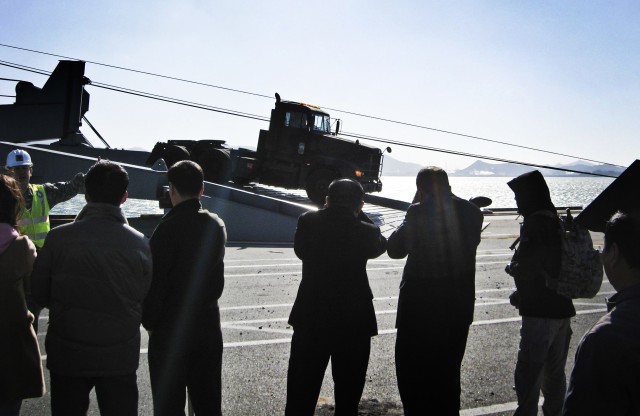
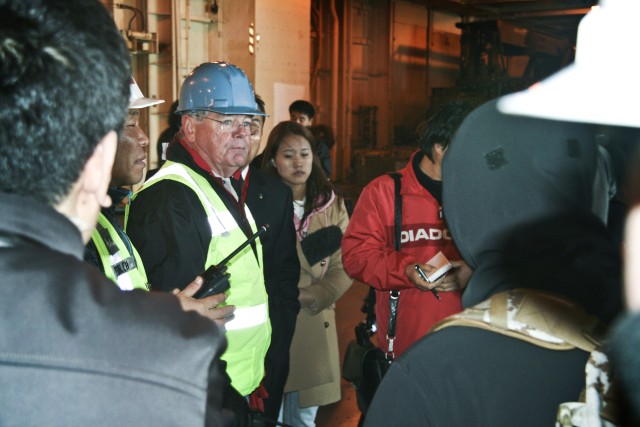
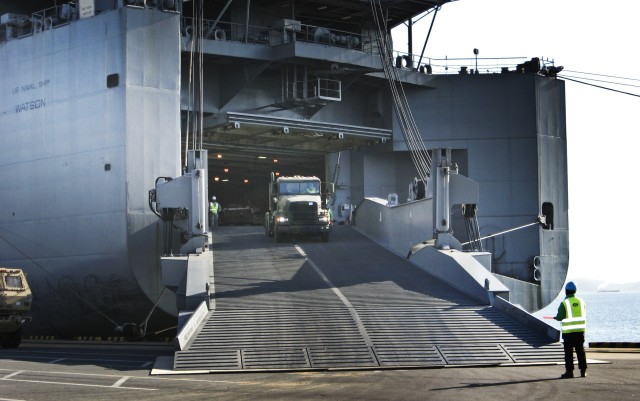
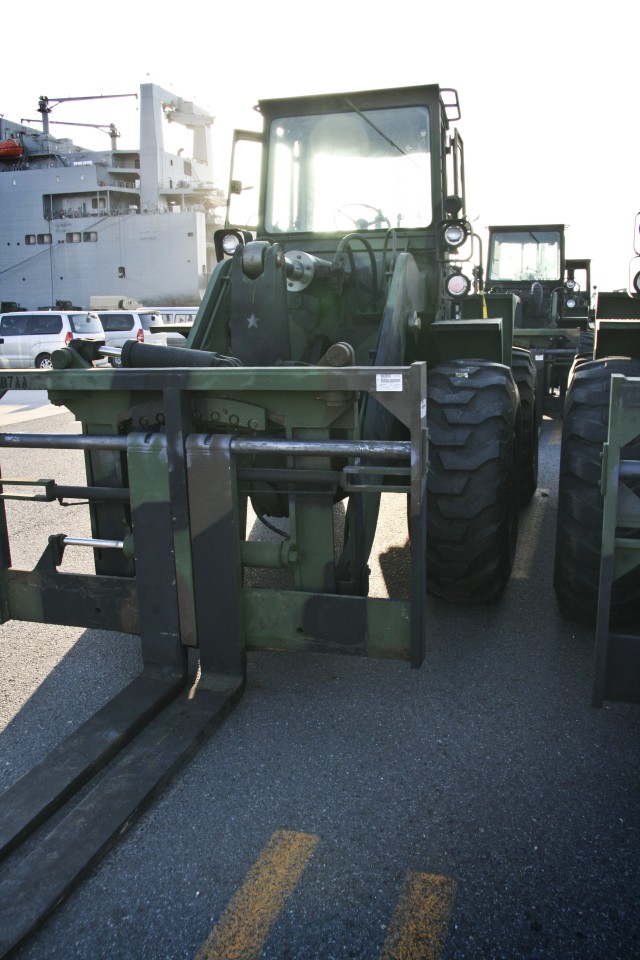
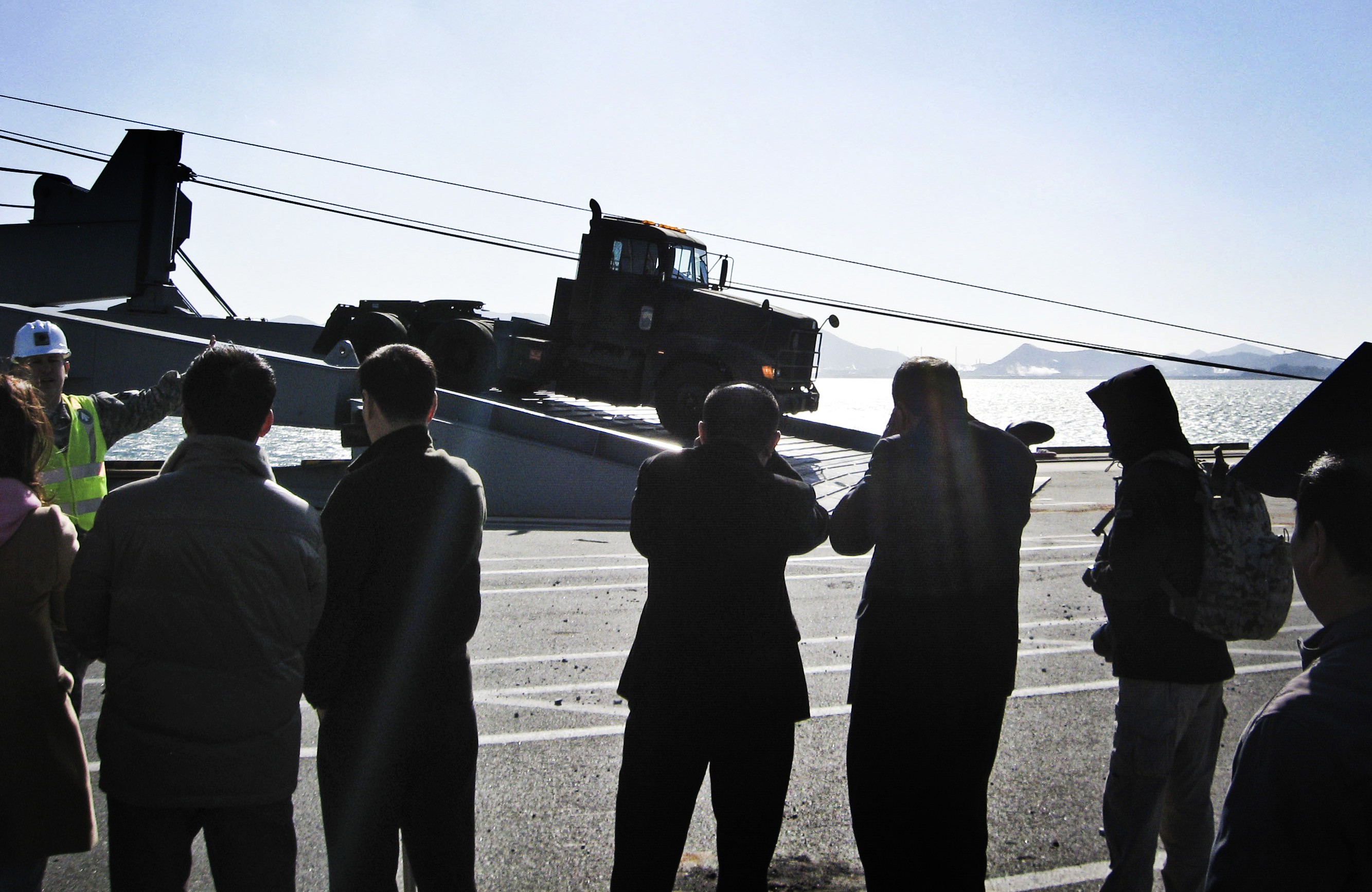

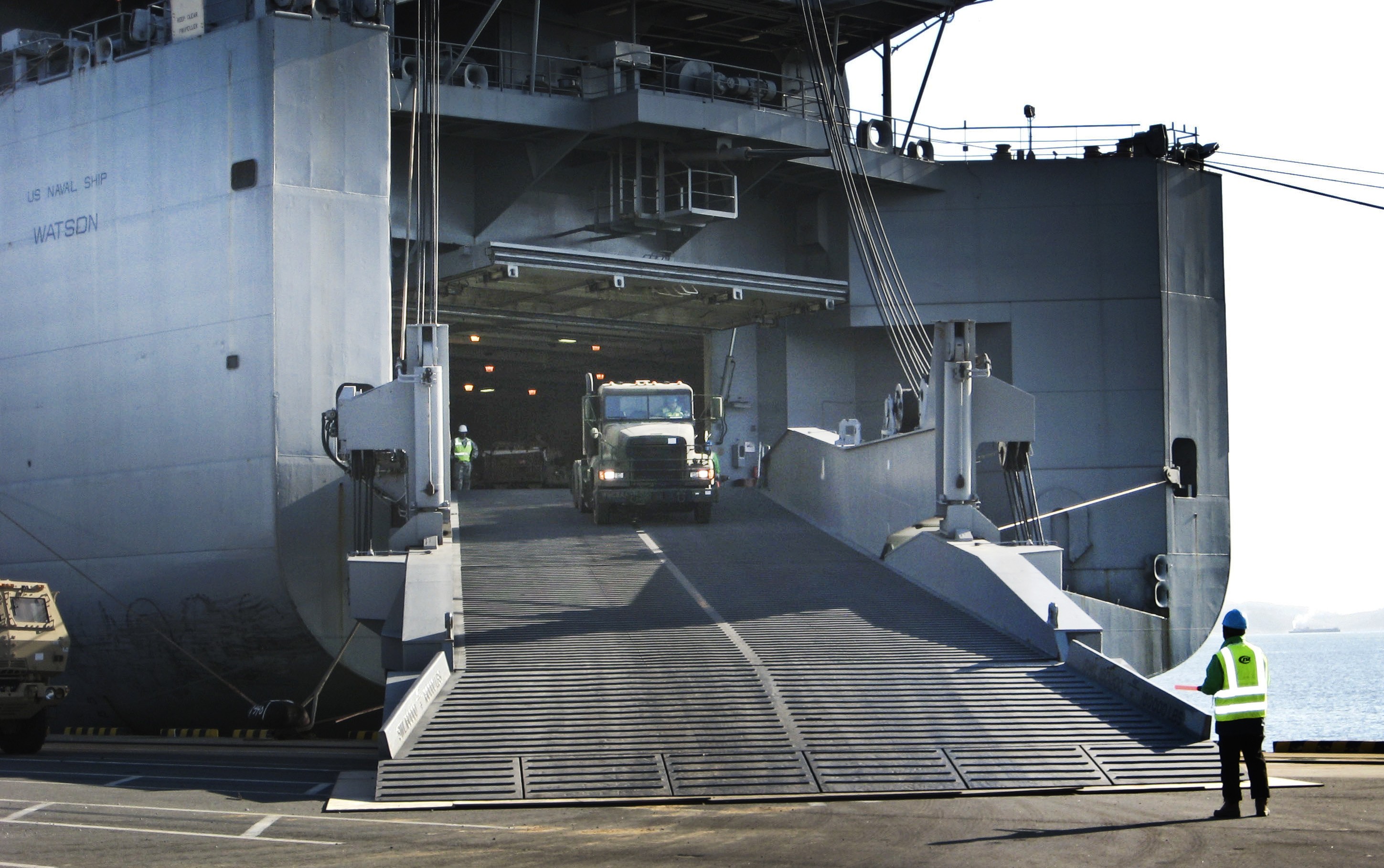

Social Sharing